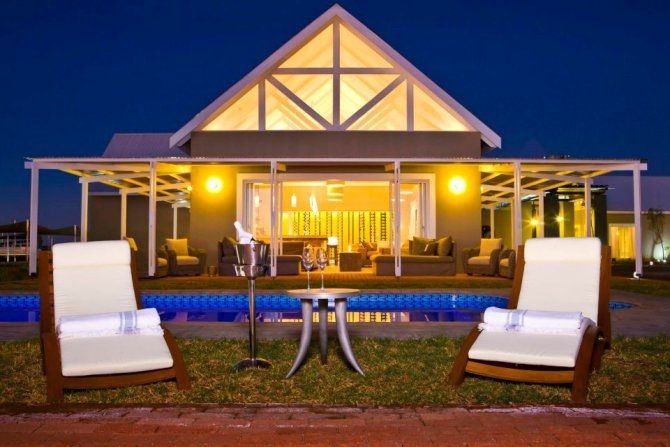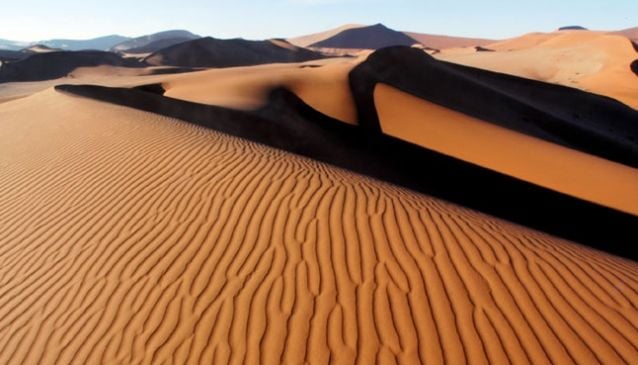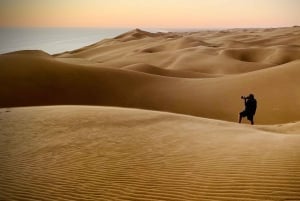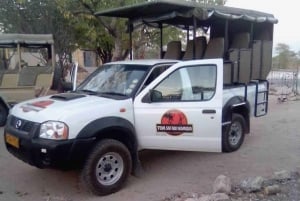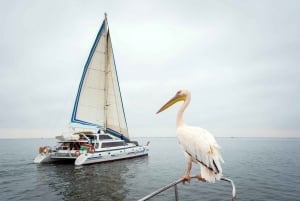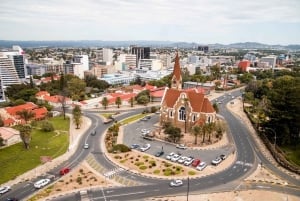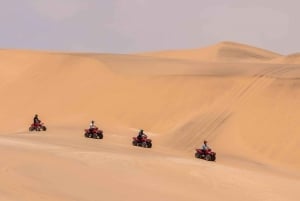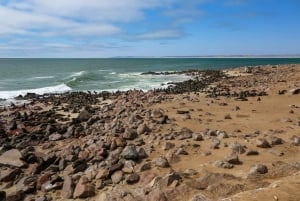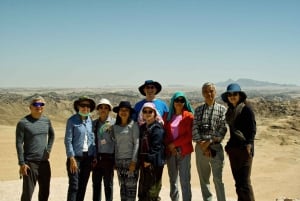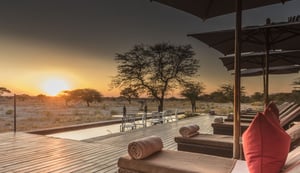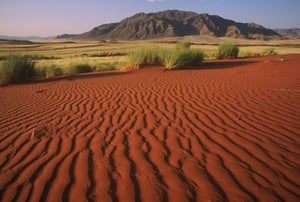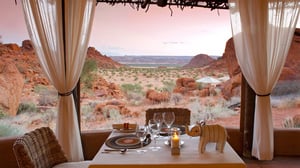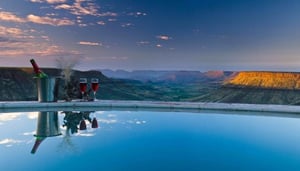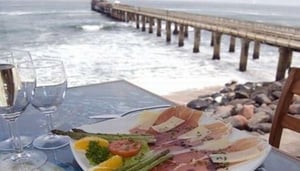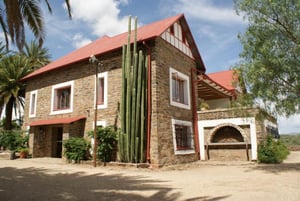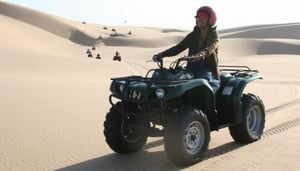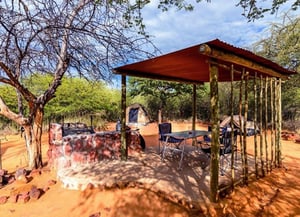Kalahari Desert
Exploring the Kalahari Desert: Namibia’s Enigmatic Red Sands
Book Top Experiences and Tours in Namibia:
If youʻre booking your trip to Namibia last minute, we have you covered. Below are some of the top tours and experiences!- Walvis Bay: Sandwich Harbour Sunset Tour
- Etosha National Park: Full or Half-Day Game Drive
- Walvis Bay: Marine Big 5 Luxury Catamaran Tour
- Windhoek: City and Township Tour
- Swakopmund: Desert Dunes Quad Biking with Optional Sandboard
The Landscape and Surroundings
Despite being classified as a desert, the Kalahari receives more rainfall than most deserts, supporting a unique ecosystem. Its landscape is shaped by undulating red dunes, vast savannahs, thorny acacia trees, and dry riverbeds. The seasonal Omaheke and Nossob Rivers meander through parts of the desert, although they rarely flow above ground. The stunning, ever-changing colors of the sand—ranging from deep crimson at sunrise to golden hues at sunset—create an unforgettable visual experience.

Wildlife in the Kalahari
The Kalahari is home to an astonishing array of wildlife, all adapted to the harsh desert environment. Some of the most iconic species include:
- Kalahari Lions – Known for their black-maned males, these powerful predators have adapted to survive with limited water sources.
- Cheetahs – The vast open plains provide an ideal hunting ground for the world’s fastest land animal.
- Oryx (Gemsbok) and Springbok – These desert-adapted antelope are frequently seen grazing among the dunes.
- Meerkats – These small, social creatures are a delight to watch as they emerge from their burrows to sunbathe in the mornings.
- Brown Hyenas and Bat-Eared Foxes – Nocturnal hunters that roam the desert under the cover of darkness.
- Birdlife – The desert is home to ostriches, kori bustards, and the striking crimson-breasted shrike, Namibia’s national bird.
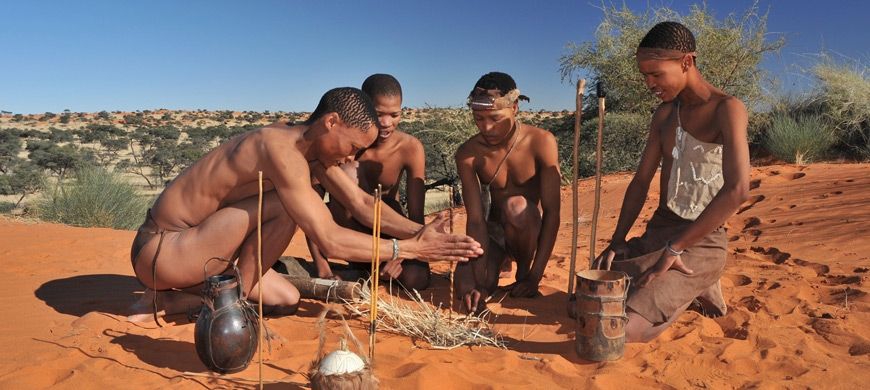
Activities in the Kalahari Desert
The Kalahari offers a wide range of activities for visitors eager to experience its beauty and wildlife up close.
1. Game Drives & Wildlife Safaris
Morning and sunset game drives offer the best opportunities to spot wildlife, with expert guides leading safaris through the dunes and grasslands. Night safaris reveal nocturnal creatures rarely seen during the day.
2. Guided Nature Walks & Bushman Experiences
Walks with San (Bushman) guides provide a fascinating insight into the indigenous San people’s survival techniques, from tracking animals to foraging for edible plants and crafting traditional tools. This experience offers a deep cultural connection to Namibia’s first inhabitants.
3. Hot Air Ballooning & Scenic Flights
Soaring over the dunes at sunrise in a hot air balloon provides breathtaking aerial views of the desert. Scenic flights also offer a chance to appreciate the vastness of the Kalahari from above.
4. Stargazing in the Desert
With minimal light pollution, the Kalahari Desert offers some of the best stargazing in the world. The clear night skies reveal the Milky Way, planets, and countless constellations.
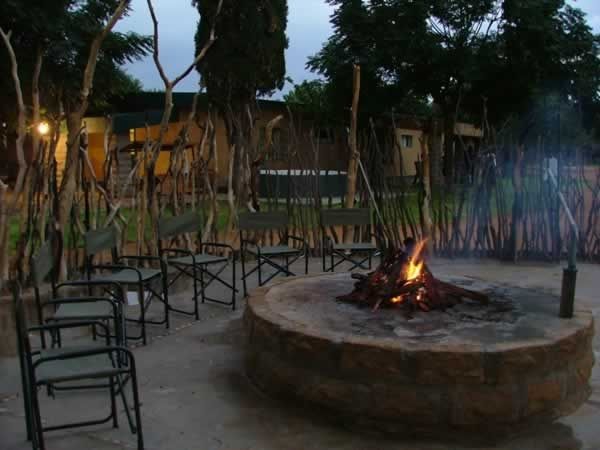
Accommodation Options in the Kalahari
From luxurious lodges to budget-friendly campsites, the Kalahari provides accommodation options to suit every traveler.
Luxury & Private Lodges
- Bagatelle Kalahari Game Ranch – A stunning lodge offering chalet accommodations among the dunes, with incredible game drives and stargazing experiences.
- Kalahari Anib Lodge – Nestled in the heart of the desert, this lodge provides modern comfort with a rustic charm, perfect for relaxing after a day of adventure.
- Kalahari Farmhouse – A tranquil retreat offering a blend of farm life and desert scenery, ideal for families and nature lovers.
- Zebra Kalahari Lodge & Spa – A great option for those wanting a mix of adventure and relaxation, with guided safaris and spa treatments available.
- Kalahari Game Reserve Campsites – For those who love the outdoors, various campsites offer an authentic experience under the stars.
- Kgalagadi Transfrontier Park Camps – Located within the park’s borders, these camps provide an immersive wilderness experience for self-drive travelers.
The Kalahari Desert is a year-round destination, but the best time to visit depends on the experience you seek:
- May to September (Dry Winter Season) – Cooler temperatures make for comfortable safaris, and wildlife is easier to spot as animals gather around water sources.
- October to April (Rainy Season & Green Kalahari) – Occasional rainfall transforms the desert into a lush green landscape, attracting migratory birds and newborn wildlife.
The Kalahari Desert is more than just an expanse of sand—it is a place of hidden wonders, incredible wildlife, and deep cultural history. Whether you’re exploring its landscapes on a game drive, meeting the San people, or simply enjoying the tranquility of the dunes, the Kalahari offers an unforgettable adventure. A visit to this unique Namibian destination is sure to leave you with lasting memories of its stark beauty and extraordinary life.
